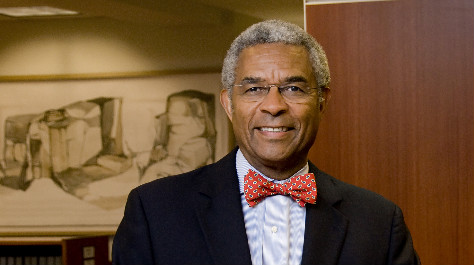Media Advisory: Palmer Available to Comment on President's Health Care Reform Proposal
"The President's proposal and the televised meeting with members of Congress on Feb. 25 should help the viewing public understand why it takes over a thousand pages of text to reform the health system in America," says Larry I. Palmer, who has joint appointments as a professor at William & Mary Law School and as a professor at Virginia Commmonwealth University's Department of Health Administration in the College of Allied Health Professions.
Palmer goes on to say that the sometimes acrimonious and partisan debate illustrates the complexity of our existing governance system for health care. The dialogue over how to change that governance system illustrates two persistent features of health reform in America since World War II.
"First, the United States is the only industrialized nation that has tried to contain health care costs, provide access, and improve quality without a collective or governmental means of controlling costs. Republicans, at least since President Nixon, have tended to rely upon market mechanisms for containing costs. It was Nixon who, for instance, introduced the idea into health policy discourse that health maintenance organizations could contain health costs. Democrats, on the other hand, have promoted more direct government intervention into the health care market, albeit it incremental. President Johnson, for instance, pushed through Medicare for the elderly as the first step in the gradual move towards universal health coverage."
"Second, each incremental change in health policy changes the politics of health policy. Medicare recipients, for instance, like their government -financed programs, but are not necessarily supportive of allowing newer groups to gain federal subsidies for their health care. As a result, some aspects of 'reform' take care of an incomplete aspect of the last Medicare reform, the prescription drug program in 2003. There are myriad aspects of the governance and financing of existing government health programs that are 'fixed' in the current reform proposals from Medicare and Medicaid to the Indian Health Service."
"The overall thrust of the many layered reform proposal put forth by the President, including the authority of the federal government to regulate health insurance rates, is to change the method of financing health care in this country. We have moved from fee-to-service to managed care without containing costs or expanding access," Palmer says. "The new model for payment for health care will be labeled something like 'pay for performance' in an attempt to merge cost, quality, and access issues. The philosophy of regulation that would make sense out of these many statutory provisions is a combination of incentives and disincentives for providers, health care financers, and patients. It will be neither a traditional Democratic or Republican program, but a theory of regulation based on 'nudges' and continuous monitoring of the health system's performance over the next decade or two."
Larry I. Palmer joined the faculties of the College of William & Mary and Virginia Commonwealth University in 2008. His teaching and research address areas where health, law, and policy intersect. Prior to coming to Virginia, he taught at the University of Louisville and Cornell University. He is the author of two books, Endings and Beginnings: Law, Medicine and Society in Assisted Life and Death (2000) and Law, Medicine and Social Justice (1989). He was executive producer of and author of the study guide for Susceptible to Kindness: Miss Evers' Boys and the Tuskegee Syphilis Study, an award-winning video.
